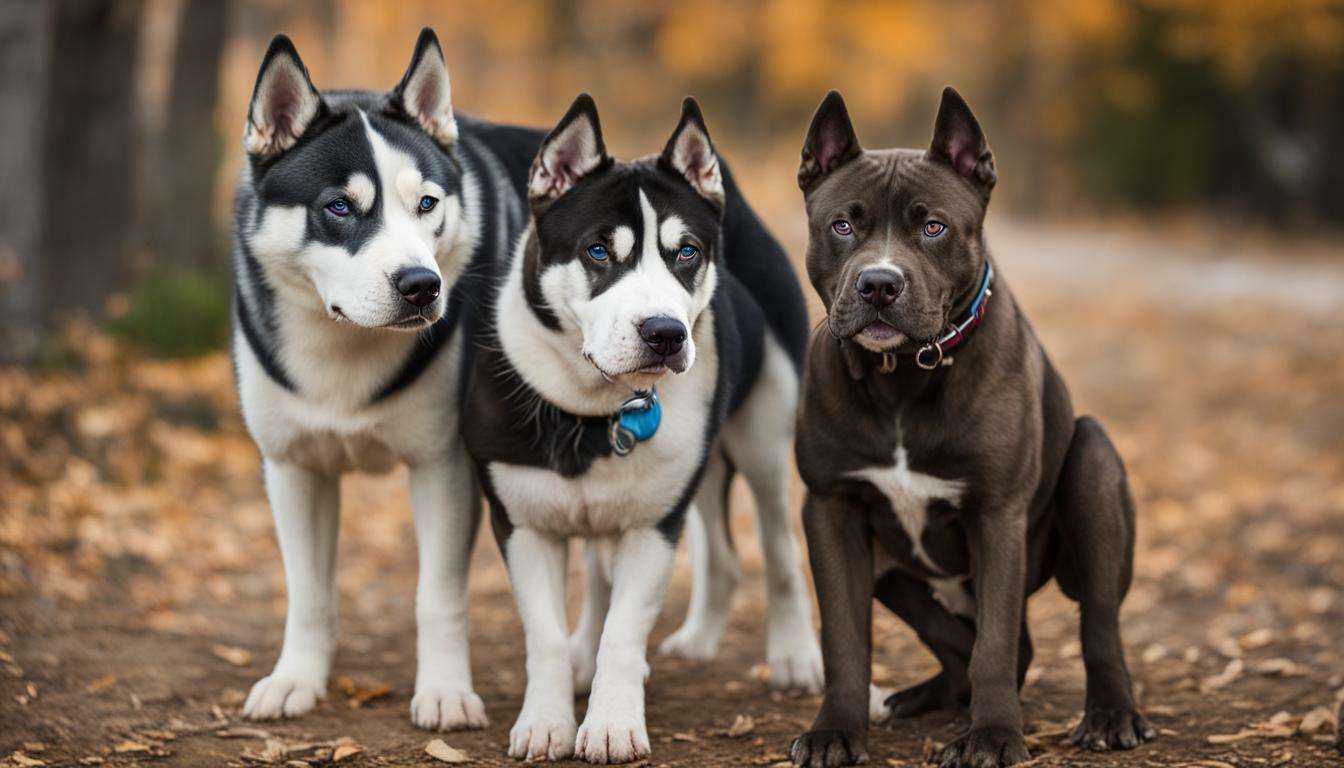When it comes to choosing a pet, two popular breeds that often come to mind are Huskies and Pitbulls. These breeds have their own unique characteristics and qualities that make them attractive to different people. If you’re contemplating between a Husky or a Pitbull, it’s essential to consider their differences in physical appearance, temperament, exercise needs, and compatibility with your lifestyle.
Pitbulls are known for their muscular build and loyalty. They have a compact and powerful physique, making them quite impressive. With their short coat, Pitbulls require minimal grooming and maintenance. On the other hand, Huskies have a distinctive appearance, renowned for their captivating eyes and thick double coat, which helps them withstand cold environments.
When it comes to temperament, both breeds are generally friendly and sociable. However, Huskies have a mischievous and independent nature, while Pitbulls are known for their affection towards children. It’s important to note that Huskies require proper supervision and training around young kids due to their high energy levels.
In terms of exercise needs, Pitbulls require about 60 minutes of exercise per day. They enjoy physical activities and are generally easier to train. On the other hand, Huskies need at least 90-120 minutes of intense activity daily due to their high energy levels. Training a Husky can be more challenging as they can easily get bored.
Both Huskies and Pitbulls can make great family pets. However, it’s crucial to consider their differing characteristics and exercise needs when choosing the perfect pet match for you. Take into account your lifestyle, preferences, and the specific needs of each breed to make an informed decision.
In the following sections, we will delve deeper into the comparison between Huskies and Pitbulls, covering topics such as their physical characteristics, temperament, exercise needs, and compatibility with families and children. By the end of this article, you’ll have a better understanding of which breed aligns better with your expectations and lifestyle.
When comparing Huskies and Pitbulls, it’s important to consider their physical characteristics. Pitbulls have a compact and muscular build, with a strong and powerful physique. Their short coat requires minimal grooming, making them low-maintenance pets. On the other hand, Huskies have a distinct appearance, known for their thick double coat that helps them withstand cold temperatures. Their striking eyes, which can be blue or multicolored, are one of their most captivating features.
While Pitbulls have a stocky and sturdy build, Huskies are generally larger in size. Male Huskies can weigh between 45-60 pounds, while Pitbulls range from 30-75 pounds. Both breeds exhibit strength in their physique, but Huskies are renowned for their endurance and stamina.
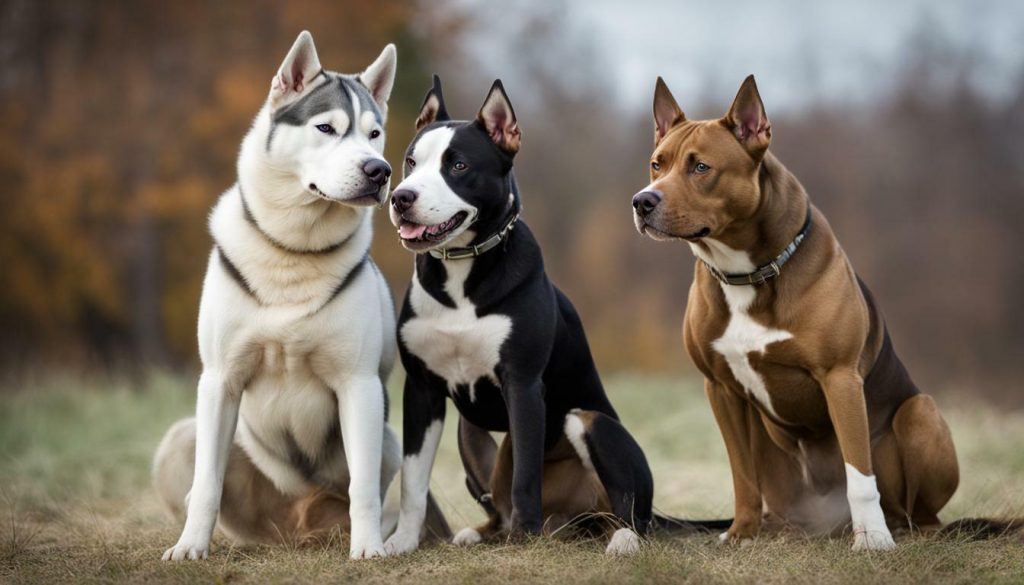
Table 1: Physical Characteristics Comparison
| Breed | Size | Coat Type | Weight Range |
|---|---|---|---|
| Husky | Large | Thick double coat | 45-60 pounds |
| Pitbull | Medium to large | Short coat | 30-75 pounds |
As shown in Table 1, Huskies are generally larger with a thick double coat, while Pitbulls have a medium to large size with a short coat. These distinct physical characteristics contribute to their unique appearances and adaptability to different environments.
Comparing Temperament and Behavior
When considering a Husky or a Pitbull as a potential pet, it is important to understand their temperament and behavior. While both breeds are known for their friendly nature, there are some differences to take into account.
Huskies have an independent and mischievous nature. They are curious, adventurous, and often display a stubborn streak. This independent spirit can make them a bit more challenging to train compared to Pitbulls. However, with patience, consistency, and positive reinforcement, Huskies can be trained effectively.
Pitbulls, on the other hand, are known for their loyalty and protective instincts. They are affectionate and form strong bonds with their families. Pitbulls are often gentle and patient with children, making them a good choice for families with kids. Proper socialization is key to ensure that they develop into well-rounded dogs.
Protective Instincts and Socialization
Both Huskies and Pitbulls have protective instincts, but they may manifest differently. Huskies are generally not aggressive, but their strong prey drive and independent nature can make them more prone to wandering off or chasing small animals. A securely fenced yard and leash walks are essential to ensure their safety.
Pitbulls, on the other hand, are known for their protective nature towards their families. They are eager to please and can be trained to be excellent watchdogs. However, early socialization is important to prevent any potential aggression towards strangers or other dogs. A well-socialized Pitbull can be friendly and accepting of new people and animals.
In summary, while both Huskies and Pitbulls have friendly temperaments, Huskies are more mischievous and independent, while Pitbulls are known for their loyalty and protective instincts. With proper training and socialization, both breeds can make wonderful family pets.
Exercise Needs and Training
When considering a pet breed for your family, it is important to take into account their exercise needs and training requirements. Both Huskies and Pitbulls are active breeds that require regular physical activity to maintain their health and well-being. However, there are some differences in their exercise needs that you should be aware of.
Pitbulls typically need about 60 minutes of exercise per day. This can include activities such as brisk walks, jogging, or playing fetch. They are energetic dogs that enjoy being active and thrive in an environment where they can use their physical strength. Regular exercise not only helps to keep them physically fit but also helps to stimulate their minds and prevent boredom.
Huskies, on the other hand, have higher exercise needs compared to Pitbulls. They are a breed that was originally bred for sled-pulling and have a lot of energy to burn. Huskies require at least 90-120 minutes of intense activity per day. This can include activities such as running, hiking, or participating in dog sports. Huskies also enjoy mental stimulation, so puzzle toys and training sessions can be beneficial for them.
When it comes to training, Pitbulls are generally easier to train compared to Huskies. They are intelligent and eager to please, which makes them quick learners. However, Huskies can be more stubborn and independent, making training a bit more challenging. Consistent and positive reinforcement-based training methods work best for both breeds, and early socialization is important to ensure their well-rounded development.
| Breed | Exercise Needs | Training |
|---|---|---|
| Pitbull | About 60 minutes per day | Easier to train |
| Husky | At least 90-120 minutes per day | More independent and stubborn |
When choosing the best breed for your family, it is important to consider your own lifestyle and commitment to meeting their exercise needs. Both Huskies and Pitbulls make great family pets, but their differing exercise requirements and training characteristics should be taken into account. Remember, a well-exercised and well-trained dog is a happy and healthy dog!
Compatibility with Families and Children
When it comes to finding the best breed for families and children, both Huskies and Pitbulls have their unique characteristics to consider. Pitbulls are known for their affectionate nature towards children, making them great companions for families. Their loyalty and protective instincts make them excellent watchdogs, providing an added sense of security. However, it is important to note that proper supervision and training around young kids are essential due to the Pitbulls’ strong energy levels.
On the other hand, Huskies have a high energy level and require plenty of exercise to keep them happy and healthy. While they can be friendly and sociable, their independent spirit and mischievous nature might not make them ideal for families with very young children. However, with proper socialization and training, Huskies can form strong bonds with children and make wonderful family pets.
To summarize, Pitbulls’ affection and loyalty towards children make them a great choice for families. However, their high energy levels require proper supervision and training. Huskies, despite their mischievous nature, can also be suitable for families with children as long as their exercise needs are met and they receive proper training and socialization.
Table: Comparison of Compatibility with Families and Children
| Pitbulls | Huskies | |
|---|---|---|
| Affection towards children | Affectionate and loyal | Sociable, but with proper supervision |
| Energy level | High | High, requires intense exercise |
| Training requirements | Less prone to boredom, easier to train | Requires consistent training and socialization |
It is crucial to remember that individual personalities and training efforts play a significant role in how well any breed interacts with children. As with any pet, it is important to educate yourself about the breed, consider your family’s needs, and spend time with the dog before making a final decision.
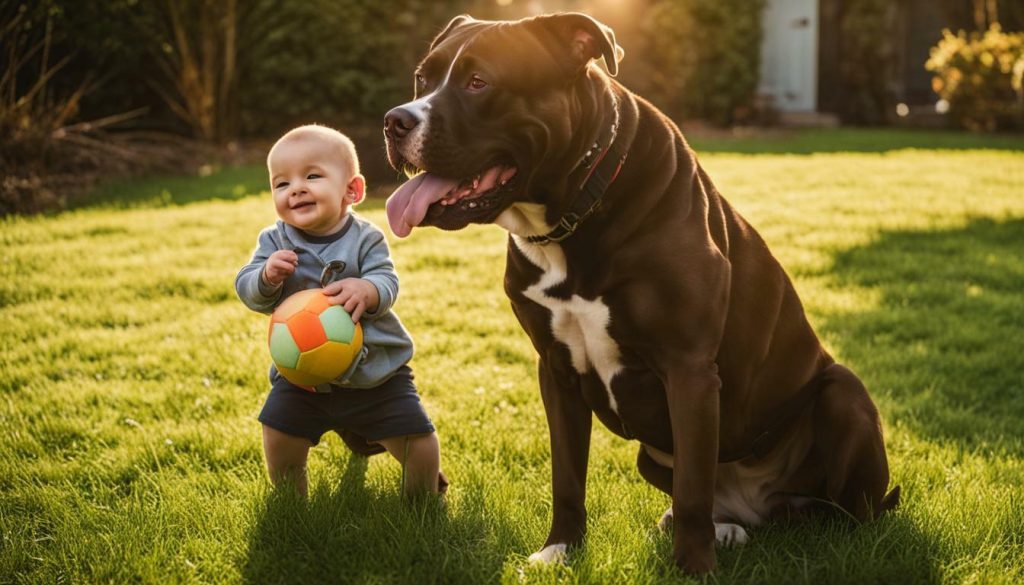
Section 6: Making the Right Choice
When it comes to choosing the perfect pet match, considering the individual lifestyle, preferences, and the specific needs of each breed is crucial. When comparing Huskies and Pitbulls, there are important factors to take into account. Both breeds have their unique characteristics, and understanding them is key to making an informed decision.
Pitbulls are known for their loyalty and affection, making them excellent family companions. Their muscular build and short coat require minimal grooming, making them low-maintenance pets. On the other hand, Huskies captivate with their captivating eyes and independent spirit. They have a thick double coat that requires regular grooming, and their mischievous nature adds a touch of adventure to your daily routine.
When it comes to exercise needs, Huskies require more intense activity, needing at least 90-120 minutes of exercise per day, while Pitbulls are content with about 60 minutes. Pitbulls are generally easier to train compared to the easily bored Huskies, but with patience and consistency, both breeds can be obedient and well-behaved.
Ultimately, the best breed for your family depends on your preferences and lifestyle. Pitbulls’ affectionate nature makes them great with children, while Huskies require proper supervision and training around young kids due to their high energy levels. Consider these factors when making your decision, and remember that both breeds can bring joy and love to your home.
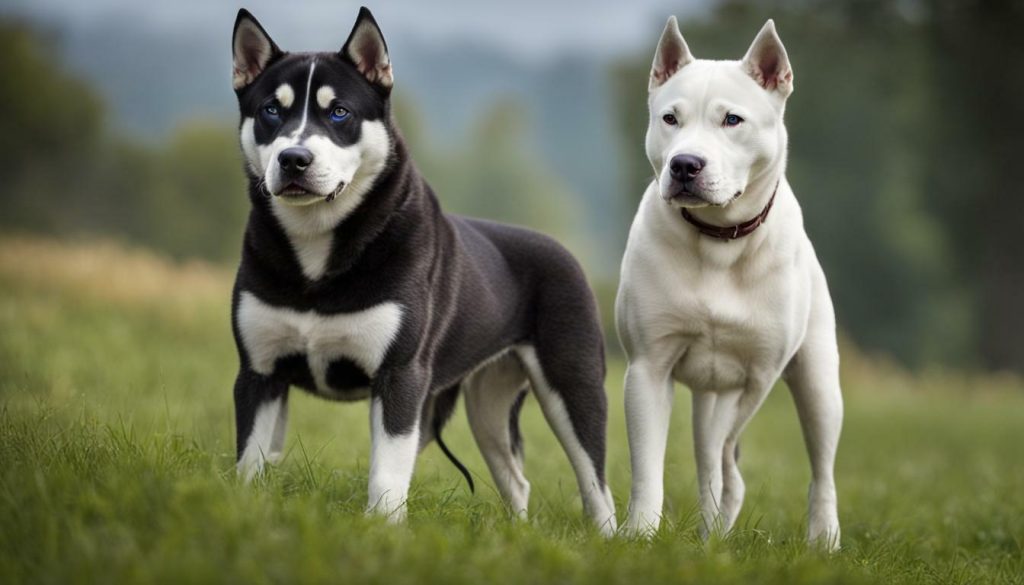
| Breed | Physical Characteristics | Temperament | Exercise Needs |
|---|---|---|---|
| Pitbull | Muscular build, short coat | Loyal, affectionate | Approximately 60 minutes per day |
| Husky | Thick double coat | Independent, mischievous | At least 90-120 minutes per day |
Caring for Your Chosen Breed
When it comes to caring for your chosen breed, whether it’s a Husky or a Pitbull, there are some important considerations to keep in mind. Both breeds have specific needs and requirements that can contribute to their overall health and well-being.
Starting with grooming, Huskies have a thick double coat that requires regular brushing to prevent matting and to keep their fur healthy. On the other hand, Pitbulls have a short coat that is relatively low-maintenance, requiring less brushing. However, Pitbulls may benefit from a regular bath to keep their coat clean and shiny.
In terms of nutrition, it is essential to provide a balanced and nutritious diet for both breeds. Consult your veterinarian to determine the appropriate portion sizes and types of food that best suit your dog’s age, size, and activity level. It is important to remember that each breed has different dietary requirements, so ensure you are feeding them a diet that meets their specific needs.
Exercise is also a crucial aspect of caring for your chosen breed. Huskies and Pitbulls are both energetic breeds that require regular physical activity to stay happy and healthy. Providing daily exercise, such as walks, runs, or playtime in a fenced yard, can help prevent behavioral issues that may arise from pent-up energy. Additionally, mental stimulation through training and interactive toys can also help keep your dog engaged and prevent boredom.
| Breed | Grooming Needs | Nutrition | Exercise Requirements |
|---|---|---|---|
| Husky | Regular brushing due to thick double coat | High-quality, balanced diet | At least 90-120 minutes of intense activity per day |
| Pitbull | Less grooming due to short coat | High-quality, balanced diet | About 60 minutes of exercise per day |
Remember, caring for your chosen breed goes beyond physical needs. Providing a loving and supportive environment, regular veterinary check-ups, and socialization opportunities are also vital for their overall well-being. By understanding and fulfilling the specific care requirements of Huskies or Pitbulls, you can ensure a happy and healthy life for your furry friend.
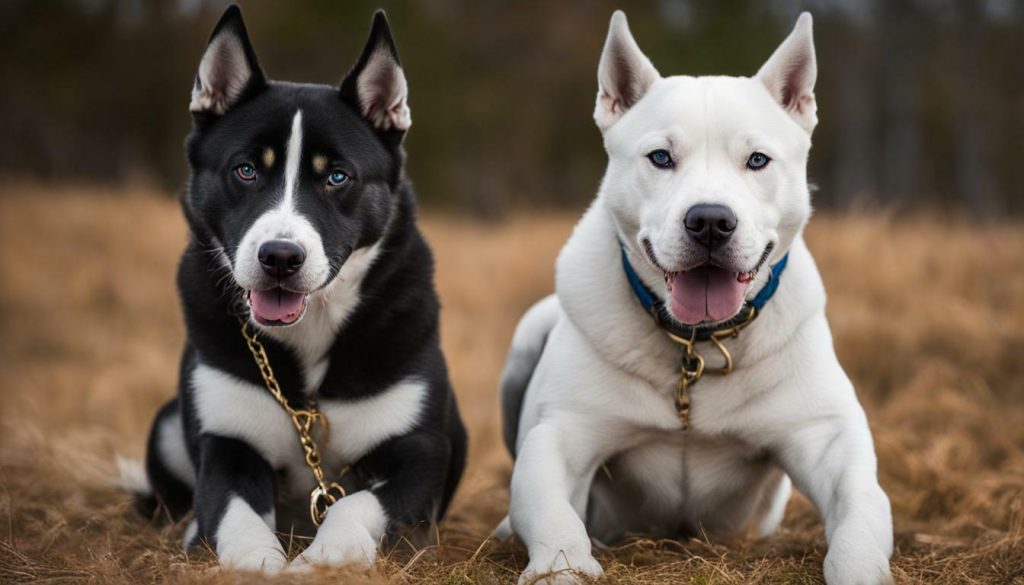
Training and socialization are key elements in overcoming challenges and building a strong bond with your Husky or Pitbull. Both breeds require consistent and positive reinforcement-based training methods to ensure they understand and follow commands. However, each breed has specific characteristics that may pose unique challenges.
Huskies are known for their independent and sometimes stubborn nature. They have a strong sense of adventure and may be easily distracted, making training a bit more challenging. It is important to establish yourself as the pack leader and use positive reinforcement techniques to keep them engaged. Regular mental stimulation, such as puzzle toys or training games, can also help prevent boredom and destructive behavior.
Pitbulls, on the other hand, are highly trainable and eager to please. They thrive on positive reinforcement and are quick learners. However, due to their protective instincts, early socialization is vital to ensure they are comfortable around other dogs and people. Exposing them to various environments, sounds, and experiences from a young age will help them develop into well-rounded and confident companions.
| Challenges | Training Tips |
|---|---|
| Husky’s independent nature | Establish yourself as the pack leader and use positive reinforcement techniques. Provide mental stimulation to prevent boredom. |
| Pitbull’s protective instincts | Focus on early socialization to ensure they are comfortable around other dogs and people. Use positive reinforcement training methods. |
Remember, consistency, patience, and positive reinforcement are key to overcoming challenges and building a strong bond with your chosen breed.
By understanding the unique characteristics and needs of Huskies and Pitbulls, you can effectively address training challenges and strengthen your bond with your furry friend. Remember to be patient, consistent, and use positive reinforcement techniques to motivate and engage your pet. With time and effort, you will create a loving and harmonious relationship that will bring joy and companionship for years to come.
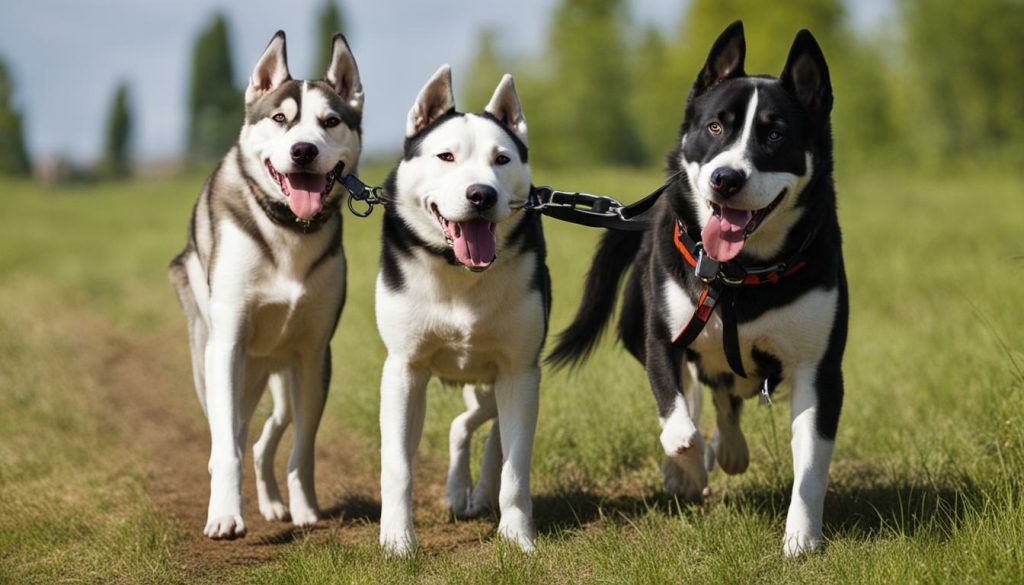
Conclusion: Finding Your Perfect Pet Match
When comparing Huskies and Pitbulls as potential pet breeds, it is essential to consider their differences in physical appearance, temperament, exercise needs, and compatibility with different lifestyles. Pitbulls are known for their muscular build and loyalty, making them excellent protectors and companions. On the other hand, Huskies possess an independent spirit and captivating eyes, which add to their unique charm.
In terms of physical characteristics, Pitbulls have a compact and powerful physique with a short, low-maintenance coat. This makes them suitable for families or individuals looking for a dog breed that requires less grooming. In contrast, Huskies have a thick double coat that is perfect for cold environments, but it requires regular brushing to prevent matting and to keep their coat healthy and shiny.
Both breeds have friendly temperaments and enjoy socializing. However, Huskies have a mischievous and independent nature, which can make training them a bit more challenging. Pitbulls, on the other hand, are known for their affection towards children and their loyalty towards their owners. While they both make great family pets, it is important to provide proper supervision and training around young kids, as Huskies have high energy levels and may become too exuberant in their play.
Exercise needs are another important consideration when choosing between a Husky and a Pitbull. Pitbulls typically require about 60 minutes of exercise per day, whereas Huskies need at least 90-120 minutes of intense activity to keep them physically and mentally stimulated. Additionally, Pitbulls tend to be easier to train compared to Huskies, who can easily become bored and lose interest in repetitive training sessions.
Ultimately, both Huskies and Pitbulls can make wonderful companions for the right individual or family. By understanding their unique characteristics and considering your own lifestyle and preferences, you can make an informed decision on which breed will be the perfect pet match for you. Remember to provide proper care, training, and love to build a strong bond with your chosen breed, and enjoy the rewarding experience of having a loyal and loving canine companion.
FAQ
Q: What are the physical characteristics of Huskies and Pitbulls?
A: Huskies have a thick double coat and captivating eyes, while Pitbulls have a muscular build and a short, low-maintenance coat.
Q: How do the temperaments of Huskies and Pitbulls differ?
A: Huskies are more mischievous and independent, while Pitbulls are known for their loyalty and protective instincts.
Q: How much exercise do Huskies and Pitbulls require?
A: Pitbulls need about 60 minutes of exercise per day, while Huskies require at least 90-120 minutes of intense activity.
Q: Are Huskies and Pitbulls good with children?
A: Pitbulls are known for their affection toward children, while Huskies require proper supervision and training around young kids due to their high energy levels.
Q: Which breed is easier to train, Huskies or Pitbulls?
A: Pitbulls are generally easier to train compared to Huskies, who can easily get bored and require consistent training and mental stimulation.
Q: What factors should I consider when choosing between Huskies and Pitbulls as a pet?
A: When choosing between Huskies and Pitbulls, you should consider your lifestyle, preferences, and the specific characteristics and exercise needs of each breed.
